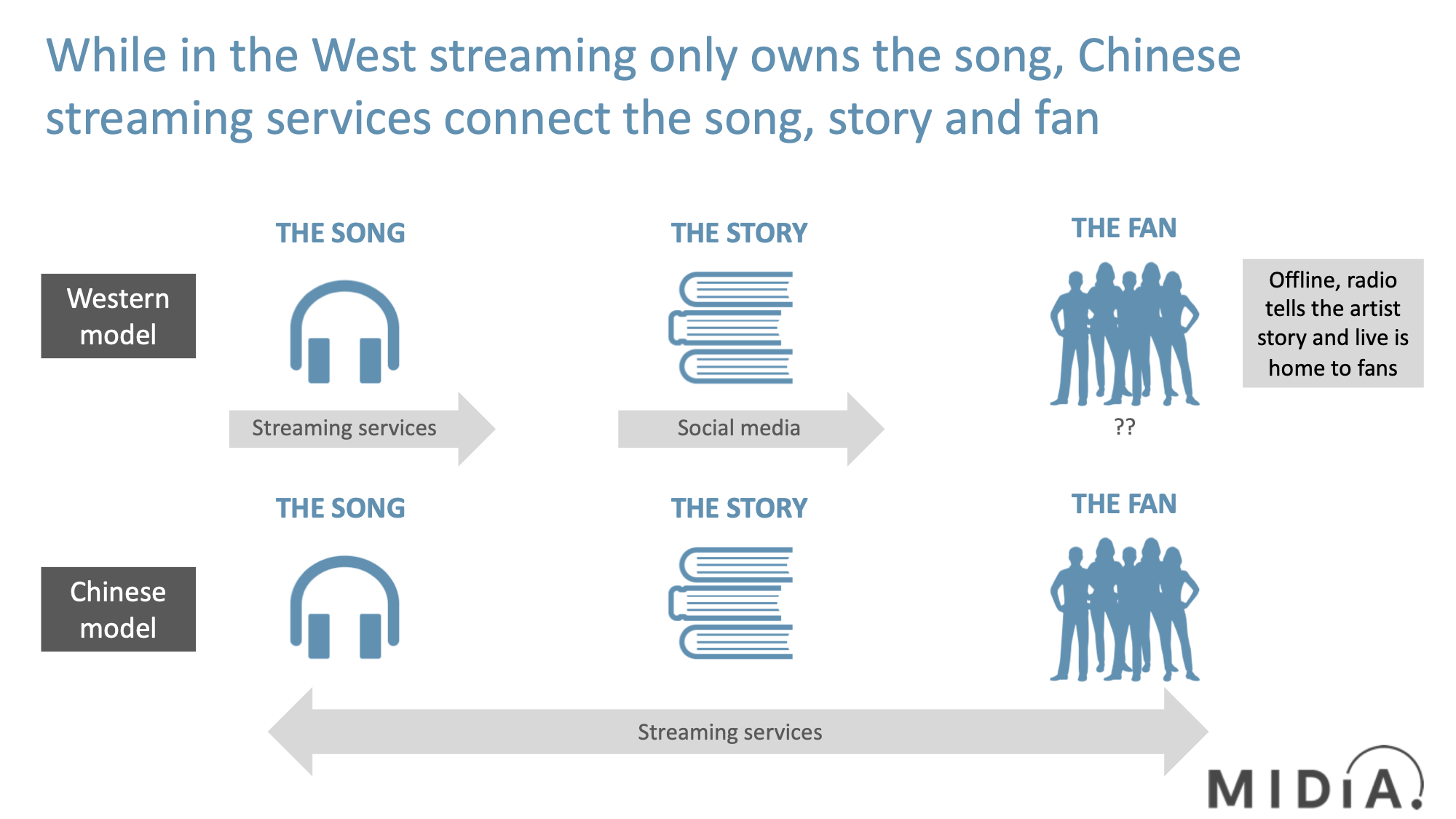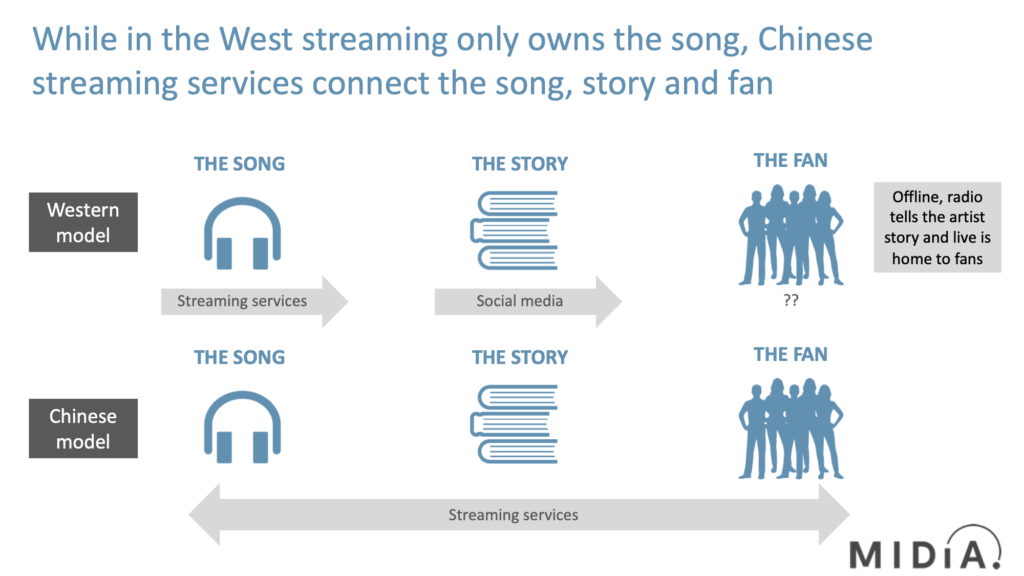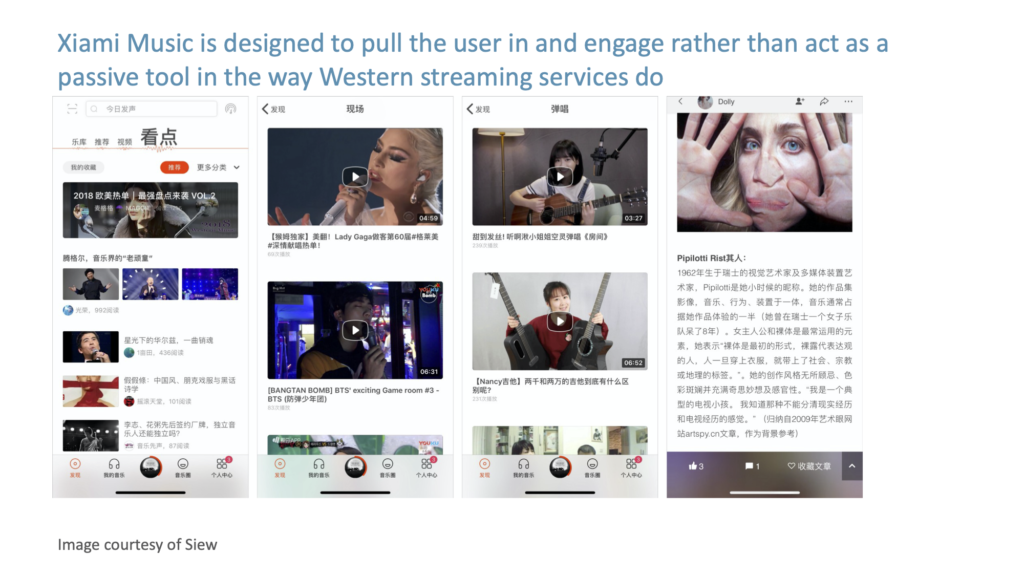Music Streaming Needs a New Future


While doing some research on the Chinese streaming market I came across this fantastic UX tear down of Xiami Music. I recommend you read it in full. The day before I found this – also must-read –article on Beyoncé’s streaming strategy, which explains how she uses different platforms to segment her fanbase (Tidal – super fans, Spotify engaged fans, Netlix, passive fans). These two articles may seem entirely unrelated, but they are in fact two sides of the same coin: fandom.
Regular readers of MIDiA’s output will know that we have made fandom one of our central research themes, most recently identifying it as one of the next five growth drivers for the music business. We have also discussed at length how Chinese streaming services have built businesses around monetising fandom while Western streaming services instead simply monetise consumption.
Now I am going to take this thinking one step further by proposing a new way to consider how to segment the music consumption journey and how Western companies can become part of this new vision.

Consider music consumption as three key steps:
- The song
- The (artist) story
- The fan
Streaming services now own the song. Social is doing an okay, but far from perfect job of owning the artist story. But no one – digitally – is owning the fandom. Music fans have to hop from one place to another to join the dots. This of course contrasts sharply with Chinese streaming services which own all three steps in the music journey. Let’s take a look at Xiami Music to illustrate the point.

I have written a lot in the past about Tencent Music’s portfolio of apps. Alibaba’s Xiami Music is one of the smaller players and its end-to-end value proposition is all the more impressive for that: this sort of functionality is table stakes for competing for audience attention in the Chinese market.
Delivering the music is almost just the starting point for Xiami Music, wrapping the music with endless additional context and features including (but by no means limited to): music videos, lyrics, commentaries, reviews, news, comment streams, virtual tipping, badges, trophies, lyrics poster, you can even grow your own Tamagotchi. As Siew writes in his UX tear down:
Featured Report
Streaming strongholds High-potential markets for global music players
While the balance of music streamers continues to tip towards global south markets, their smaller ARPU rates limit their revenues. Meanwhile, periodic price-rises and the advent of supremium will reinforce the contributions from the West. This report highlights streaming strongholds, those markets which, underscored by high music engagement and his...
Find out more…“Every piece of music has its own entourage — live versions, videos (the official one and the live ones), behind-the-scene footage, outtakes, remakes or covers, reviews etc.
Xiami has taken a leaf out of WeChat’s playbook. Everything you need about a song, an album, or an artiste/band, you can get it on Xiami. No need for you to google for lyrics, head to YouTube for a video, or launch Twitter/Weibo for news.”
Time to stop leaning back
Another insightful observation that Siew makes is that Xiami Music – as with other Chinese streaming apps – has a white background to make it easier to read and interact with lots of content. Whereas Western streaming apps have dark backgrounds as they behave as largely passive vehicles for delivering music: find your playlist, press play, close screen.
There is a fundamentally different UX ethos:
- Western apps: lean back, listen with minimal friction
- Chinese apps: lean forward, dive in, interact
Years ago (11 to be precise) I laid out a vision for lean forward music experiences, where interactive context and social features were built around the music. Now is the time for Western streaming services to push themselves out of their UX comfort zones and start to own stages two and three of the music journey.
Lead, don’t follow
It is important that they do not all follow the same path. Differentiation – or the abject lack of it – is the Achilles heel of Western streaming services. The hope here is that they each pursue their own path and use this blank canvass to develop their own unique identities. Which will make it easier for record labels and artists to follow Beyoncé’s approach of segmenting their audiences across different platforms.
Of course this will take time. It may even take another 11 years (though hopefully not). In the meantime radio companies should be seeing this as a great opportunity to carve out a role for themselves in step two (artist story telling). Most have realised by now that they cannot compete with streaming but instead should compete around it. Get it right and radio could become the home of artist storytelling, a genuine complement to streaming consumption. Meanwhile, TikTok may well be best placed to act fast to own step three (fandom) before the Western streaming services can get their respective acts in gear.
There is nothing quite like some fierce competition to focus the mind.

The discussion around this post has not yet got started, be the first to add an opinion.